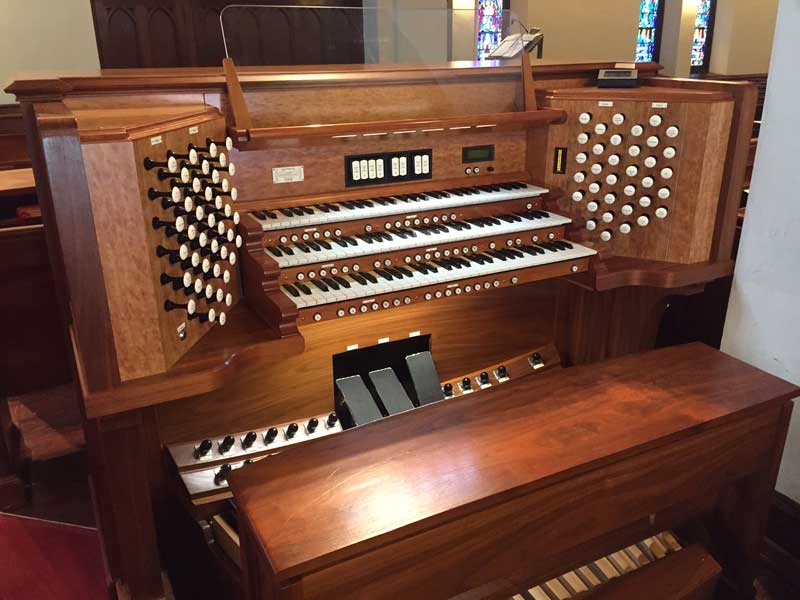
Opus 2149, was built by Austin Organs, Inc. of English roots in 1955. This instrument was restored in 2009 and the final result has been described as having the rich sonority of an English cathedral organ which is most suited to the history of Christ Church.
In the early 1950's, the organ was a two-manual Felgemaker pipe organ, located on the opposite side of the choir from the present organ, right beside the pipe chamber. In 1955 the Felgemaker organ was replaced by a two-manual Austin organ. In 2009 the Austin organ was upgraded with a beautiful new three-manual console, and the addition of 48 Walker Technical digital voices, creating one of the finest organs in Northeastern North Carolina.
The completion of the renovation provided greatly increased tonal resources. The pipe/digital combination allowed the tonal development of the instrument to meet the needs of a growing music ministry while providing the most dynamic instrument for congregational support in worship.
The Great Division is a foundational portion of the pipe organ intended to have the strength and clarity to provide the basis of the instrument…a completely new 8-4-2 Principal chorus on the Great to complement the current pipe Principal resources. These new stops were scaled to provide a clear character while giving body and depth to the chorus.
The secondary Flute Chorus was developed with a Metal Bourdon for solid foundational work and complementary Harmonic Flute for the developmental harmonics. The 4' line of the Flute chorus was developed to complete the upper harmonic series. This same logic was carried through with an independent Principal of clear, strong character. The Principal series was completed with the new digital Mixture.
The harmonic development and dynamic range of the Swell Division were both dramatically increased with the new specification. The addition of a complete complementary Principal chorus in the Swell allows for a solid foundation for counter-point with the Great Principals. The additional Strings, Mixtures and Reeds also completes the acceptable tonal color of this division to properly balance a complete three manual instrument.
The Choir Division is a new resource that provides an added dimension to the instrument. This secondary expressive division provides a superb counterpoint to the organ and allows a colorful lighter dynamic range with multiple uses.
The Pedal Division saw a major expansion of both the harmonic and dynamic range. In keeping with traditional organ design, with the Manual series strongly developed on the 16' line it is critical to provide the foundational support of the Pedal in the 32' harmonic series. While space and budget did not permit these to be in natural acoustic pipes, digital voices provide the perfect alternative. All major endorsing organizations allow pedal extensions in this series as they are accepted as musically and financially advantageous.
Another concern was the ability to maintain a clear, well defined pedal line for counterpoint. In order to accomplish this, we elected to provide independent 16', 8' and 4' Principal lines in the pedal. These were regulated to complement and support the manual Principals while keeping that clear, well defined line.
The final area of recommendation was the reed structure. Again, given the importance of color and foundation that the reeds will bring to the instrument, it was critical to provide lines which are independent of the manuals. As a result, we included an independent pedal unit reed to provide the clear strong pedal line. As with the Flues, we also felt that this harmonic series should extend to 32' and have included this as a digital extension.

